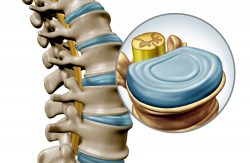Sound Partially Destroys Tumors That Don’t Come Back
 The University of Michigan has discovered that noninvasive technology of sound can break down tumors in the liver of rats. It can also kill cancer cells and stimulate the immune system to prevent any continued spread. This potentially could lead to advances in improved outcomes of cancer in humans.
The University of Michigan has discovered that noninvasive technology of sound can break down tumors in the liver of rats. It can also kill cancer cells and stimulate the immune system to prevent any continued spread. This potentially could lead to advances in improved outcomes of cancer in humans.
The procedure doesn’t target the whole tumor but destroys 50-75% of the tumors volume. The animals immune system has the ability to clear away the rest with no recurrence evident in more than 80% of the rats. Even if the entire liver isn’t targeted, the team could still cause a regression of the tumor and reduce the risk of metastasis in the future.
The treatment was also shown to stimulate the animals response of the immune system. This potentially contributes to the ultimate regression of the portion of the tumor that was not targeted and prevents additional growth of the cancer.
The treatment which is called histotripsy, focuses noninvasively ultrasound waves that mechanically eradicates, with millimeter precision, any targeted tissue. This rather new technique is currently used in trials of liver cancer in humans in the U.S. and Europe.
In numerous clinical occurrences, the entire cancerous tumor can’t be directly targeted in treatments for reasons that entail the mass’ location, size and stage. To research the results from partially destroyed tumors with the use of sound, the newest study targeted just a part of each mass, leaving behind an intact tumor that was viable. In addition it allowed the team to reveal the effectiveness of the approach under conditions that had limited conditions.
Histotripsy is an encouraging choice that can overcome the restrictions of presently available ablation modalities and provide effective and safe noninvasive removal of the liver tumor. The team hopes that the results from their study will prompt preclinical and clinical histrotripsy research in the future towards the eventual goal of adoption of histotripsy treatment for patients with liver cancer.
Cancer of the liver is among the top 10 causes of global deaths related to cancer. With the current treatment options, the prognosis is poor with fewer than 18% in the U.S. having a five year survival rate. The occurrence is high of tumor metastasis and recurrence following initial treatment which shows the clinical need for the improvement for people with cancer of the liver.
The normal ultrasound utilizes sound waves to produce images of the interior of the body. This new technique by the team is pioneering the utilization of these waves for treatment. Additionally their treatment will work without the side effects that are harmful with current treatments such as chemotherapy and radiation.
The transducer they have designed and made has the ability to deliver high magnitude microsecond-length ultrasound currents to center on the tumor to break it up. Traditional devices that are ultrasound use decreased amplitude currents for imaging.
The long microsecond currents from the team’s transducer cause micro bubbles within the tissues that are targeted. These bubbles will rapidly enlarge and disintegrate. These violent but very localized mechanical pulses kill cells that are cancerous and break up the structure of the tumor.
Recently the team’s study has produced results that are promising on histrotripsy treatment of immunotherapy and brain therapy.
To view the original scientific study click below:
Impact of Histotripsy on Development of Intrahepatic Metastases in a Rodent Liver Tumor Model



 Research highlighting a new type of cell discovered in the human lung could play an important role in treating diseases of the lungs. The study from the Perelman School of Medicine at the Univ. of Pennsylvania have reported their discovery of finding and identifying the new cells.
Research highlighting a new type of cell discovered in the human lung could play an important role in treating diseases of the lungs. The study from the Perelman School of Medicine at the Univ. of Pennsylvania have reported their discovery of finding and identifying the new cells. In the world of aging research, using the Yamanaka stem cell factors for cellular reprogramming has become very important. Yamanaka factors are four master genes that were discovered by Drs. Kazutoshi and Shinya Yamanaka and are used to reprogram cells back to an embryonic state. It has now been suggested that transient exposure to them may be the key to treating many health problems such as vertebral disc degeneration.
In the world of aging research, using the Yamanaka stem cell factors for cellular reprogramming has become very important. Yamanaka factors are four master genes that were discovered by Drs. Kazutoshi and Shinya Yamanaka and are used to reprogram cells back to an embryonic state. It has now been suggested that transient exposure to them may be the key to treating many health problems such as vertebral disc degeneration. A discovery of an essential nutrient has been found that the body needs to maintain health. The research from Seraphina Therapeutics in San Diego discovered the first essential fatty acid. It is known as pentadecanoic acid, also called C15:0. It has been shown to have broad health benefits and can be found in saturated fat from butter, milk, plants and fish. Currently there is omega-3 and omega-6 fatty acids that are considered essential by nutrition scientists. C15:0 would join these fatty acids and could be the first of other essential nutrients that could now be found.
A discovery of an essential nutrient has been found that the body needs to maintain health. The research from Seraphina Therapeutics in San Diego discovered the first essential fatty acid. It is known as pentadecanoic acid, also called C15:0. It has been shown to have broad health benefits and can be found in saturated fat from butter, milk, plants and fish. Currently there is omega-3 and omega-6 fatty acids that are considered essential by nutrition scientists. C15:0 would join these fatty acids and could be the first of other essential nutrients that could now be found. New research has introduced a new approach to reverse aspects of age related cognitive function and deterioration in the brain through the microbes in the gut.
New research has introduced a new approach to reverse aspects of age related cognitive function and deterioration in the brain through the microbes in the gut. Do you drink coffee daily? New research shows that there are benefits from caffeine on your cardiovascular and digestive systems.
Do you drink coffee daily? New research shows that there are benefits from caffeine on your cardiovascular and digestive systems.  An engineer has discovered a way to filter unwanted blood cells using magnets. His tool might be able to be used in clinical trials within the next year.
An engineer has discovered a way to filter unwanted blood cells using magnets. His tool might be able to be used in clinical trials within the next year. Researchers conducting a new study have identified the process of how stem cells located in the airways of the lungs switch between two distinct phases. They create more of themselves and produce mature airway cells to regenerate lung tissue following an injury.
Researchers conducting a new study have identified the process of how stem cells located in the airways of the lungs switch between two distinct phases. They create more of themselves and produce mature airway cells to regenerate lung tissue following an injury. Cellular reprogramming is a goal of regenerative medicine. It can be used to replace damaged or sick cells with a cell that is healthy. New research has now discovered improvements for the efficiency of cellular reprogramming which has great potential in cellular repair therapy.
Cellular reprogramming is a goal of regenerative medicine. It can be used to replace damaged or sick cells with a cell that is healthy. New research has now discovered improvements for the efficiency of cellular reprogramming which has great potential in cellular repair therapy. A recent study has found a link between microorganism composition that are in the gut and cognitive health. It adds to a growing wealth of research into the interactions between the brain and gut microbiome. Researchers are finding a variety of ways microorganisms in the gastrointestinal tract are diverse leading to studies over the past few years.
A recent study has found a link between microorganism composition that are in the gut and cognitive health. It adds to a growing wealth of research into the interactions between the brain and gut microbiome. Researchers are finding a variety of ways microorganisms in the gastrointestinal tract are diverse leading to studies over the past few years.